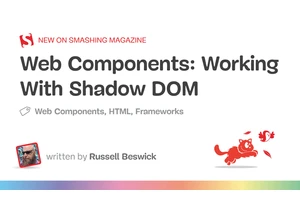We know that browsers do all sorts of different things under the hood. One of those things is the way they not only fetch resources like images and scripts from the server but how they prioritize those resources. Chrome and Safari have implemented a “Tight Mode” that constrains which resources are loaded and in what order, but they each take drastically different approaches to it. With so little information about Tight Mode available, this article attempts a high-level explanation of what it is, what triggers it, and how it is treated differently in major browsers. https://smashingmagazine.com/2025/01/tight-mode-why-browsers-produce-different-performance-results/
Connectez-vous pour ajouter un commentaire
Autres messages de ce groupe

Prompting isn’t just about writing better instructions, but about designing better thinking. Ilia Kanazin and Marina Chernyshova explore how advanced prompting can empower different product & design u

Internationalization isn’t just translation. It’s about formatting dates, pluralizing words, sorting names, and more, all according to specific locales. Instead of relying on heavy third-party librari

Design systems are more than style guides: they’re made up of workflows, tokens, components, and documentation — all the stuff teams rely on to build consistent products. As projects grow, keepi

Talking points. Smart questions. A compelling story. This guide helps you prepare for your UX job interview. And remember: no act of kindness, however small, is ever wasted. https://smashingmagazine.c

Do you need a little inspiration boost? Well, then our new batch of desktop wallpapers might be for you. The wallpapers are designed with love by the community for the community and can be downloaded

The Core Model is a practical methodology that flips traditional digital development on its head. Instead of starting with solutions or structure, we begin with a hypothesis about what users need and

Web Components are more than just Custom Elements. Shadow DOM, HTML Templates, and Custom Elements each play a role. In this article, Russell Beswick demonstrates how Shadow DOM fits into the broader
